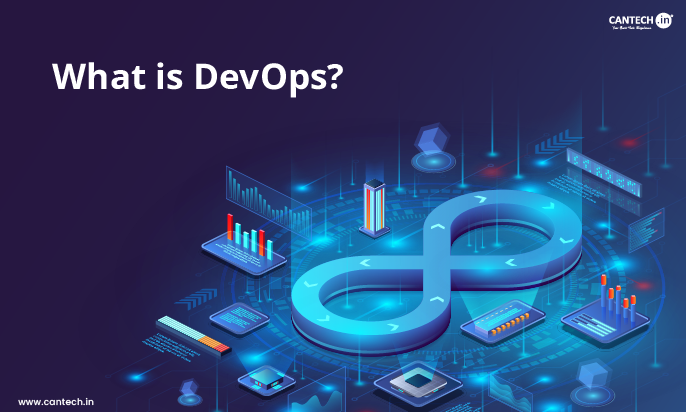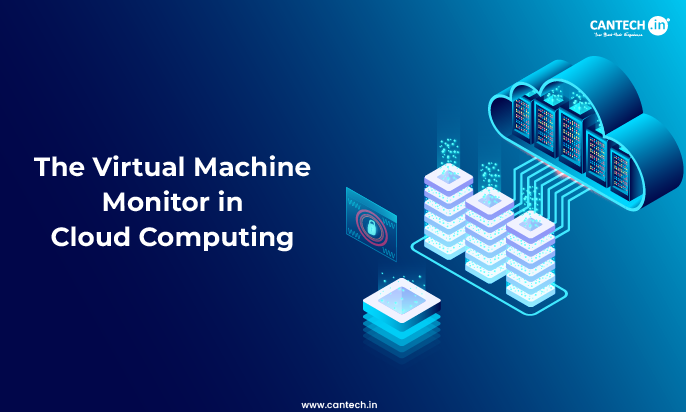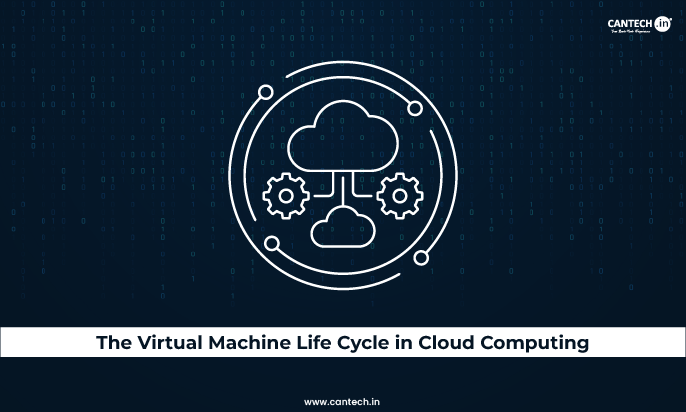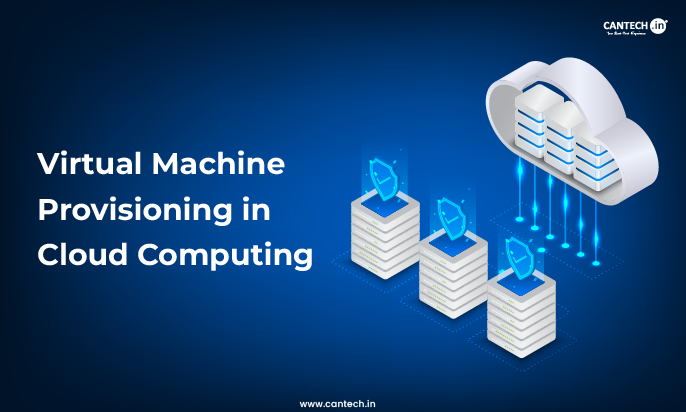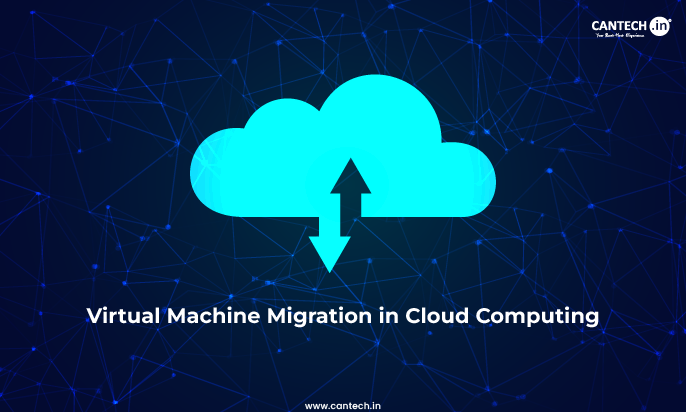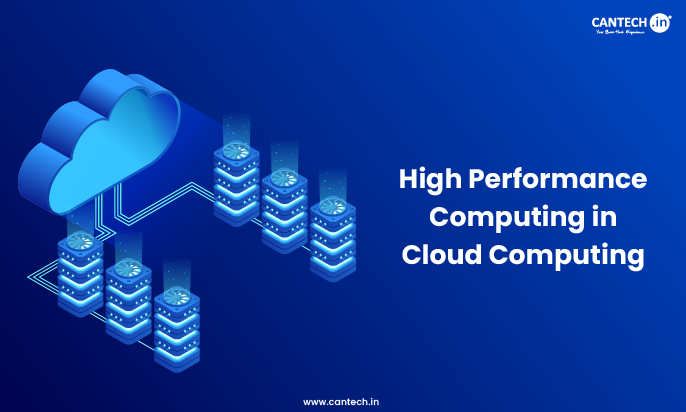Did you ever wonder how your favorite applications can be updated on such a regular basis seemingly out of thin air, acquiring new functions and getting rid of bugs without a single hitch? Or how large companies with technology can roll out new services in almost a day? The magic to this agility and efficiency in the eyes of many is something called DevOps. And, in case you have been hearing the term being thrown around but are unclear about its meaning with regard to what DevOps is, then you are on the right blog!
In this blog, we are going to take a closer look at what DevOps is and examine its central concepts, the key advantages of DevOps, and what it is doing to the world of software. Consider it to be your ultimate beginner’s guide to DevOps, or in other words, explained in layman’s terms in such a manner that even a college student will understand it. There will be no complex terminology but a simple explanation.
What is DevOps?
DevOps, at its core, isn’t just a tool or a product you can buy, it’s a culture and set of DevOps solutions designed to unify development and operations teams for faster, more reliable software delivery. Instead, it is a practice and a culture that seeks to ensure that a divide between traditionally separate software development teams, Development (Dev) and Operations (Ops), is closed.
In the past, these two teams used to operate in different aspects. Developers would concentrate on text entry and market new systems, whereas operations teams can concentrate on breaking that code into a production version and keeping the servers ready, as well as stable applications. This continually caused friction: the developers would throw code over the wall into operations and make them figure out the deployment issues, which would cause delays, finger-pointing, and overall non-cooperation.
DevOps basics is all about breaking down these walls and fostering a culture of shared responsibility, communication, and automation throughout the entire software lifecycle. It’s about getting everyone on the same page, working towards a common goal: delivering high-quality software faster and more reliably.
Why DevOps Matters?
So, why is DevOps so relevant? In the modern world where everything is fast-paced and digital, companies must be nimble. They must be able to react fast to the modifications in the market, customer opinion and competitive forces. Conventional methodologies of software development were unable to keep pace with time. Here, DevOps comes into play, which brings numerous benefits:
- Rapid Time to Market: A leaner process and automation of some tasks allow teams to issue new features and updates much faster. By this, you will be able to utilize the latest features in your favorite apps faster!
- Better Software Quality: The feedback loops, automated testing and continuous monitoring are present that can detect bugs before it’s too late and fix them, resulting in more stable and reliable software.
- Raised Efficiency and Productivity. Automation of routine work enables engineers to work on more intricate and original jobs.
- Minimized Risk: The small and frequent releases will result in no bulk of change that is hard to pin-point and fix.
- Improved Communication and Collaboration: DevOps motivates teams to communicate, share information and cooperate, causing an environment of better coordination.
- Team-Friendly Ecosystem: Reducing the friction and sharing wins automatically leads to happier team management.
These are not only the theoretical advantages of DevOps, but they can be directly translated into a competitive advantage of companies and a more pleasant user experience.
DevOps Lifecycle
The DevOps lifecycle is not a series of steps; it is another idea. Imagine it as a tight circle of continuous improvement. It entails a number of interrelated stages in DevOps, one smoothly leading to another. Although there are various representations, the typical example would be:
- Plan: In this stage, teams brainstorm new features and enhancements, translating high-level ideas into concrete requirements. They prioritize tasks, estimate effort, and outline a development roadmap that aligns with business goals.
- Code: Developers bring the proposed features to life by writing the application’s source code. Version control systems like Git are essential for tracking changes, facilitating code reviews, and safeguarding against data loss.
- Build: Once the code is considered complete, build tools compile and bundle it into an executable form. The step can normally use automated scripts to easily create binaries, libraries, and containers based on multiple targets.
- Test: After the development stage, a structured testing stage is introduced to the application. During unit testing, integration testing, and automated functional testing, regressions are hunted down and confirmations made that the software is acting as expected, so that it would pass through the quality standards set.
- Release: The application is prepared to be released after its tests. Release notes like documentation is created, packages are built according to various environments and deployment scripts are completed to ease the deployment.
- Deploy: The application is rolled out in live production systems, thus it becomes available to the end-users. The orchestration of servers, containers, and configuration used to manage the environment as code is often performed using deployment pipelines to reduce human error.
- Operate: In the working state of the application, the production environments are in place. Measures, logs, and alerts are gathered to check the performance, promptly identify issues, and ensure continuous operation of the service.
- Monitor: The information collected in operation is going through analysis to expose the trend of performance, user interactions, and technical debt that is developing.
It is what people tend to imagine as an infinite loop so as to demonstrate that there is no end. One level supports another, and an unending flow of automation and two-way feedback is going round the wheel in a buzz. That, when channelled to action, is DevOps.
DevOps Practices
The adoption of the DevOps lifecycle is subject to a pre-determined set of necessary practices, not optional. These steps constitute the basis of a good DevOps strategy.
- Continuous Integration (CI): The developers regularly commit their code changes into a shared repository, and then auto builds and auto tests are done every time. This fact provides enough time to prevent an event of integration hell that can occur when significant, late code additions become combined with a codebase, creating a state that is extremely difficult to reconcile in a technical sense.
- Continuous Delivery (CD): Successful code flow is automatically provided with the settings to be deployed to an environment that is similar to production. As a result, the application will be constantly deployed, and it is always ready to be in production.
- Infrastructure as Code (IaC): Servers, networks, databases, and other parts of the infrastructure are not configured manually, but with code. This offers predictability, reproducibility, and the chance to version-control infrastructure, as well as source code of an application.
- Monitoring and Logging: Data regarding the application performance, the error level and the user interaction should always be collected. Elaborated logging policy gives the possibility to quickly track and eliminate incidents, which leads to an improved, stable production environment.
- Automated Testing: Running a wide range of tests programmatically, at many levels in the delivery pipeline. This significantly reduces the amount of manual verification to be done and results in better product reliability.
- Version Control: Using tools like Git to track and manage changes to source code, configuration artifacts, and infrastructure as code. This is because it enables parallel development, convenient reverting to old changes and retains a clear chronological journal of all modifications.
- Collaboration and Communication: Cultivating transparent communication pathways and promoting interdisciplinary cooperation. This transformation encompasses both organizational culture and technological adaptation.
These practices, when implemented together, truly enable the DevOps methodology to shine.
Challenges in Adopting DevOps
Cultural Resistance and Mindset Shift
As organizations get bigger, IT tends to split into separate functional areas (Development, Operations, and QA). DevOps is all about breaking these walls down and, instead, creating a culture of shared responsibility, collaboration, and transparency. People are resistant to this shift, as they are comfortable with their specialization.
The addition of continuous processes (Integration, Delivery, Deployment) affects how work is done. Developers must now consider operational stability, and Operations now has to adopt rapid, automated changes. With the added speed of working, teams are afraid of making more mistakes, which makes them hesitant to adopt the new processes.
Toolchain Sprawl and Automation Complexity
There are many tools in the DevOps ecosystem. There are tools for everything: source control (Git), CI/CD (Jenkins, GitLab), configuration management (Ansible, Terraform), and monitoring (Prometheus, Splunk). The result is that organizations frequently are forced to deal with toolchain sprawl, which is the extensive use of multiple, non-integrated tools that make automation inefficient.
Automating deployments and processes is relatively uncomplicated with newer cloud-native applications. But most enterprise and operationally critical applications are legacy systems with no infrastructure as code and no deployments designed for automation. Integrating these older systems into modern CI/CD DevOps pipelines requires effort-intensive custom scripts and high-level technical expertise that can often lead to bottlenecks.
Integrating and Automating DevSecOps
Integrating security into the directly flowing DevOps processes is a challenge as security reviews and testing are always performed late in the development lifecycle. DevSecOps gates need to transition into enablers that shift security left and automate the required security verification. This paradigm shift demands automated processes for static and dynamic analyses and a myriad of other processes.
Across regulated industries, maintaining and providing proof of an audit trail and compliance is paramount (SOX, HIPAA). The velocity of continuous deployment to production requires compliance automation to dictate that every code change is fully compliant with the necessary regulations at every deployment while providing an audit trail of immutable records, which intellectually is a significant challenge to complex processes.
Measuring Success and Proving ROI
If there is no clear visible data: If you are utilizing a tool or running stand-up meetings, it does not mean you are doing DevOps. One of the really common mistakes is not having visible, concrete metrics; for example, the DORA metrics (Deployment Frequency, Lead Time for Changes, Mean Time to Recovery (MTTR), and Change Failure Rate). Without these, organizations will not be able to assess if there were any improvements to their delivery performance, or if operational stability improved at all.
Training, setting up the automated infrastructure, and transforming teams all cost a lot for the company. Normally, the management teams want to see results very quickly. However, the DX (and, ROI) is actually a lot of things such as (but not limited to) having faster time to market, better quality of the outputs, and reduced operational costs. Failing to set these parameters correctly for the returns on investment can result in the company abandoning the initiative altogether.
DevOps Culture
Although tools and practices are vital, the most crucial part is the DevOps culture. It is all about changing cultures and practicing a new working culture. The important points are:
- Shared Responsibility: The Operations and Development teams take ownership of a common piece of software in its development (from design to production).
- Empathy and Trust: Teams realize and acknowledge problems of each other and collaborate to surpass difficulties.
- Automation First: A high degree of automation to automate lots of erroneous things.
- Continuous Learning and Improvement: Be an experimenter, be ready to receive feedback, and always strive to find a way to streamline operations.
Faster releases are not the aim, but only a side-effect of the aim, which is a more productive, effective, team focused and fun delivery of software.
What is a DevOps Engineer?
After understanding what is involved, we should discuss those who are involved in making all this happen. What is a DevOps engineer? A DevOps engineer is not necessarily a coder or an infrastructure manager. They are a hybrid, a bridging person between the world of development and operations.
- A DevOps engineer is a competent person, a holder of the following competencies:
- Coding Skills: Scripting Language (Python, Bash, Go), knowledge of automation.
- System Administration: Skilled with understanding operating systems (Linux, Windows), networking and clouds.
- Automation Tools: Experience of using different DevOps automation tools, CI/CD, configuration and state management, monitoring, and so on.
- Problem-Solving: the capability to diagnose and eliminate complicated problems in all parts of the software pyramid.
- Communication and Collaboration: Great personal skills to enable teamwork among various teams.
- Security Mindset (DevSecOps): To an increasing degree, security practices will also be integrated into the lifecycle by DevOps engineers, giving rise to the term DevSecOps.
They design the automated pipelines, debug the deployment problems and are the ambassadors of DevOps culture in an organization. They play both vital roles in DevOps support and the functionality of the whole system.
Best DevOps Tools
DevOps needs to have a versatile tool to use to automate and control different lifecycle elements. Even though the most optimal DevOps tools can vary depending on the requirements and the current infrastructure, the following examples of the most common and highly efficient categories and examples are regularly mentioned:
Version Control Systems:
Git: It is the winner without a doubt in terms of source code management. It can enable developers to monitor the changes, cooperate, and coordinate various versions of their codes.
CI/CD tools: Continuous Integration/Continuous Delivery:
- Jenkins: Extremely configurable and open-source automation server for continuous integration of software building, testing and deployment. It has been around and it is used to this day.
- GitLab CI/CD: A component made part of the GitLab platform that has CI/CD functionality with source code management.
- GitHub Actions: Just like GitLab CI/CD, it is integrated with GitHub, and you can also have automated workflows directly inside your repositories.
Other well-known CI/CD services mainly provided by the cloud: CircleCI, Travis CI, Azure DevOps Pipelines.
Infrastructure as Code: Configuration Management Tools
- Ansible: This is an open-source provisioning, configuration management, orchestration, application deployment and many IT requirements automation engine. It is called agentless and straightforward in structure.
- Puppet: An effective means of automating your infrastructure management and configuration, the best tool not only for managing hundreds of servers.
- Chef: Like Puppet, Chef relies on its recipes and cookbooks to describe and provision infrastructure.
- Terraform: An infrastructure as Code tool enabling you to describe and supply data center infrastructure with high-level language. Fine when working with a multi-cloud.
- Docker: An application that provides OS-level virtualization to distribute software in blocks, named as containers. Containers package an app with all its dependencies, requiring them to operate similarly on various environments.
- Kubernetes: A containerized application automation deployment, scale, and management tool that is open sourced. It is the actual standard of container orchestration.
Read More: What is Kubernetes?
Read More: What is Docker?
Logging and Monitoring:
- Prometheus: An open monitoring system incorporating a time series database. Excellent to gather measures of different applications and infrastructure elements.
- Grafana: A free web application that supports analytic and visualization using open-source developed images to add to beautiful and measurable dashboards together with Prometheus.
- ELK Stack (Elasticsearch, Logstash, Kibana): It is a set of tools that are popular to gather, process, store, and examine logs. Elastic search as a search engine, Logstash as a data collection engine and Kibana as a visualization engine.
- Datadog, New Relic, Splunk: Commercial solutions with practically all monitoring, log management and analytics capabilities.
Testing Tools:
- Selenium: use in UI testing: automates the process of interacting with a web page by using a browser.
- JMeter: To perform performance tests and load tests.
- SonarQube: To continuously analyze the quality of code and static analysis.
This by no means is a complete list; it just gives you a line of thought on the scales of tools that a DevOps platform can offer. The trick here is to select tools that fit together and to fit your particular workflow.
Read More : How to Use SonarQube on Ubuntu 22.04 LTS?
DevOps Concepts and Fundamentals
Going beyond tools and techniques, a true grasp of the DevOps mindset rests on a few guiding concepts that steer every initiative. Here they are distilled into straightforward principles:
- Automation: Turn every repeatable task into an automated step, whether it’s testing, building, deploying, or spinning up infrastructure. Automation minimizes the risk of human error, accelerates every stage, and carves out space for work that drives greater value.
- Continuous Flow: Aim for a steady, frictionless movement of work from the developer’s desk to production. Detect and remove any delays, waiting periods, or handoffs that disrupt that flow.
- Feedback Loops: Set up rapid, transparent feedback at every point of the lifecycle. When a deployment stumbles, the developer hears about it right away. Those small signals, gathered and acted on quickly, turn into steady refinement.
- Continuous Improvement: DevOps isn’t a checklist that gets crossed off; it’s a perpetual cycle. Teams regularly step back, measure how things are going, spotlight the weak spots, and introduce new practices or tools.
- Customer Focus: Keep the end user at the center of every change. Every streamline, speedup, or stability fix is really about delivering more reliable, more valuable experiences to the customer.
- System Thinking: View the delivery pipeline as a linked ecosystem, not a set of isolated gadgets. Fine-tuning one link while ignoring others can create unexpected delays or waste; a holistic vision helps avoid that trap.
- Measurement: If you want something to improve, give it a number. Keep a close watch on essential metrics: how often you deploy, how long it takes to get a change into production, the average time to recover from a failure, and the rate at which changes fail. These numbers reveal your team’s performance and point to where the next gains can happen.
DevOps Team
Whereas we refer to a DevOps engineer, in our case, a proper DevOps team is thus normally a cross-functional group of people who work closely with each other. A DevOps team structure may change significantly based on the size and the demands of the organization. Examples of some common models are:
- Devoted DevOps Team: A team that takes care of the development of the pipelines and their maintenance, and other infrastructural aids and support of the CI/CD process and other development agencies.
- Embedded DevOps Engineers: DevOps engineers are planted in the individual development processes, taking their expertise to the product development process.
- SRE (Site Reliability Engineering) Model: SRE is also often identified with Google, and it is an extremely targeted methodology of operations, in which software engineering concepts are brought to bear upon infrastructure and operations challenges. Sometimes it is viewed as an extension of DevOps.
The focus is always on cooperation, common goals and eliminating old-fashioned silos, irrespective of the structure to be adopted. The effectiveness of DevOps is closely dependent on team synergy.
How Does DevOps Work?
Now, let us simplify the way DevOps works in a nutshell:
Consider a group that is developing a new functionality of a mobile app.
- Plan: They make a decision on what new feature to be.
- Code: Coders come up with the code. They do not have to wait weeks to have small code changes reviewed and instead put their small amendments into a central code repository (via Git).
- Build & test (CI): Whenever code is merged, an automatic system (such as Jenkins or GitHub Actions) will automatically build the code, and quickly test it and report any problems as they occur. Marijuana is Continuous Integration.
Then there is the Prepare for Release (CD) which automatically packages the app and makes it ready to be deployed to a staging environment (a test environment that resembles production). This makes it so that the app is kept in its release-ready state. That is Continuous Delivery.
- Deploy: When the app is tested and put forward (or automatically with a manual action), it automatically goes to the production servers and is available to the users.
- Operate & Monitor: It operates and monitors the app once it can be used and has automated tools that observe the performance, the behavior of the users, and check for errors.
- Feedback: In case problems appear or some knowledge is acquired during the monitoring, it is transferred to the development team, and new plans and improvements are produced.
This whole cycle goes rather fast, and it may happen more than once per day, which is why it is iterated fast and progress is made constantly. This is DevOps in a nutshell.
How to Implement DevOps (Step by Step)?
Assess, Build, and Secure Support
- Assess Current Position: Beginning with the software delivery lifecycle, appraise the process in its totality and recognize the areas of friction, manual activities, and blocks within the Development and Operations interphase. This will be your starting point.
- Establish Precise Objectives & Goals: Set S.M.A.R.T goals like, ‘Reduce Lead Time by 50% within 6 months’, and ‘Start a new deployment every week’. These are clear and measurable, easy to achieve, and relevant with a set timeframe.
- Achieve Executive Support: Explain the Why (What is the value from the business to the transformation) to your organization at all levels, as DevOps in any organization is the adoption of new tools and training, a shift in mindset, and a new culture.
- Start with a Small, Initial Project: Avoid the temptation to scale instantly. As a proof of concept, pick a small, easy, and highly visible component or application. This will generate success, and provide you with lessons that will help you scale.
Laying the Groundwork and Structuring the Team Properly
- Promote Collaboration: Dev and Ops traditional silos need to be eliminated. Encourage shared ownership, effective communication, and a culture of mutual trust and respect. This is the most important step.
- Develop Small Cross-Disciplinary Teams: Organize small self-sufficient units incorporated with Development, Operations, Quality Assurance (QA), and Security (DevSecOps). These units are responsible for the entire software product from coding to deployment.
- Build Trust: In the face of inevitable failure, the initial goal must not be to blame anyone but to appreciate the importance of learning and improve the overall system. Use the retrospectives to find the root cause of the issue with the aim of preventing failure in the future.
Implement Version Control and Shift Testing Left in the Process
- Provide Universal Version Control: Make sure that every piece of code, application code, infrastructure code, configuration files and documentation, is kept in a Git-based repository (e.g., GitHub, GitLab). This allows management to access edits to code and work to be kept in a manageable and collaborative manner.
- Enforce IaC: Use tools such as Terraform or Ansible to provision and manage the infrastructure environment as code to ensure that environments (Dev, QA, Prod) are consistent, and are provisioned in a timely and reliable manner.
- Automated Testing (Shift Left): Testing must be integrated in the early phases of the development process. Unit testing, integration testing, as well as testing for security issues, must be incorporated in the programming and compiling phases so as to detect and resolve issues as soon as they arise.
Construct a CI/CD Pipeline
- Integrate Continuous Integration: Organize an automatic procedure that builds, runs unit tests, and checks for quality of code every time a developer pushes code to the shared repository. The aim is to keep a codebase consistently healthy and always ready for deployment.
- Integrate Continuous Delivery: Take it a step further from the CI process to automatically deploy the successfully built and tested artifacts to the staging and/or production environments. This guarantees that a brand new version is deployable with just one automated command.
- Integrate the Automation of Deployments and Rollbacks: For the deployment process, customize and integrate CI/CD tools, for instance, Jenkins, GitLab CI, and GitHub Actions, with configuration management tools like Puppet and Chef. Ensure that there’s an automatic Rollback mechanism for when a deployment fails.
Continuously Monitor, Measure, and Improve
- Integrate Continuous Monitoring and Logging: Deploy systems with the capability of collecting logs, metrics, and traces from all of your application and infrastructure. This offers Observability, the capacity to comprehend why a system is acting the way it is in production.
- Establish and Monitor Key Metrics for Measurement: Take your progress over time with standard metrics from the industry DevOps Metrics like Deployment Frequency, Lead Time for Changes, Change Failure Rate, and Mean Time To Recovery (MTTR).
- Establish continuous feedback loops: Make sure that continuous monitoring and user feedback reach development teams directly. Use retrospectives and analytics to determine what to improve or automate next, feeding the cycle of continuous improvement.
- Broaden and automate: After the initial success and refinement of the processes, the toolsets and the best practices should be synchronized. Subsequently, the new DevOps framework should be expanded to other teams and business units of the organization.
Conclusion
DevOps is more than just a passing trend; it’s a fundamental shift in how organizations approach software development and delivery. It is all about demolishing the walls, working together, automation and never-ending enhancement.
Knowing the key principles of DevOps, its DevOps lifecycle, and a DevOps engineer position, you are already halfway on the road to seeing the strength of this approach. Whether it is a small-time startup or a large-scale business, employing DevOps assists teams to produce software of high quality, much quicker, predictably, and with increased efficiency. It is an ongoing educational and adaptation experience, yet the payoff (in terms of productivity, quality and business performance) makes the effort well worth it.
Therefore, when you wonder about a smooth update to an app or super-fast launch of a new web-based service, keep in mind that there was some magic, known as DevOps, involved! It is defining the digital world we are in, a pipeline at a time.
FAQs
Does DevOps need Coding?
Yes. Although it is not the same coding as application development. DevOps is also about writing scripts to provision, configure, and deploy automation in the cloud environment using Infrastructure as Code (IaC) automation tools such as Terraform, and Ansible.
What are the 7 Stages in DevOps?
They are Plan, Code, Build, Test, Release, Deploy, and Monitor/Operate, and represented in a figure as a continuous loop. This loop is designed to ensure continuous development and collaboration among the development and operations teams to enhance and fasten the software delivery process.
Which Tool is Mostly Used in DevOps?
Git (for version control) and Jenkins (for CI/CD) are the most popular tools in DevOps. Other important tools are Docker, Kubernetes, and the services offered by cloud providers.
